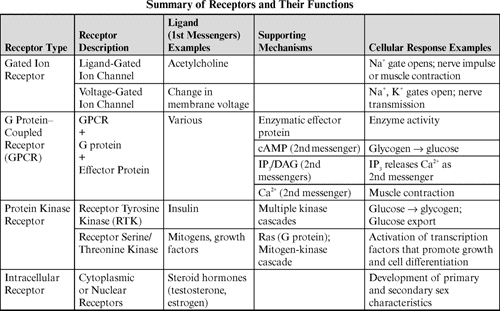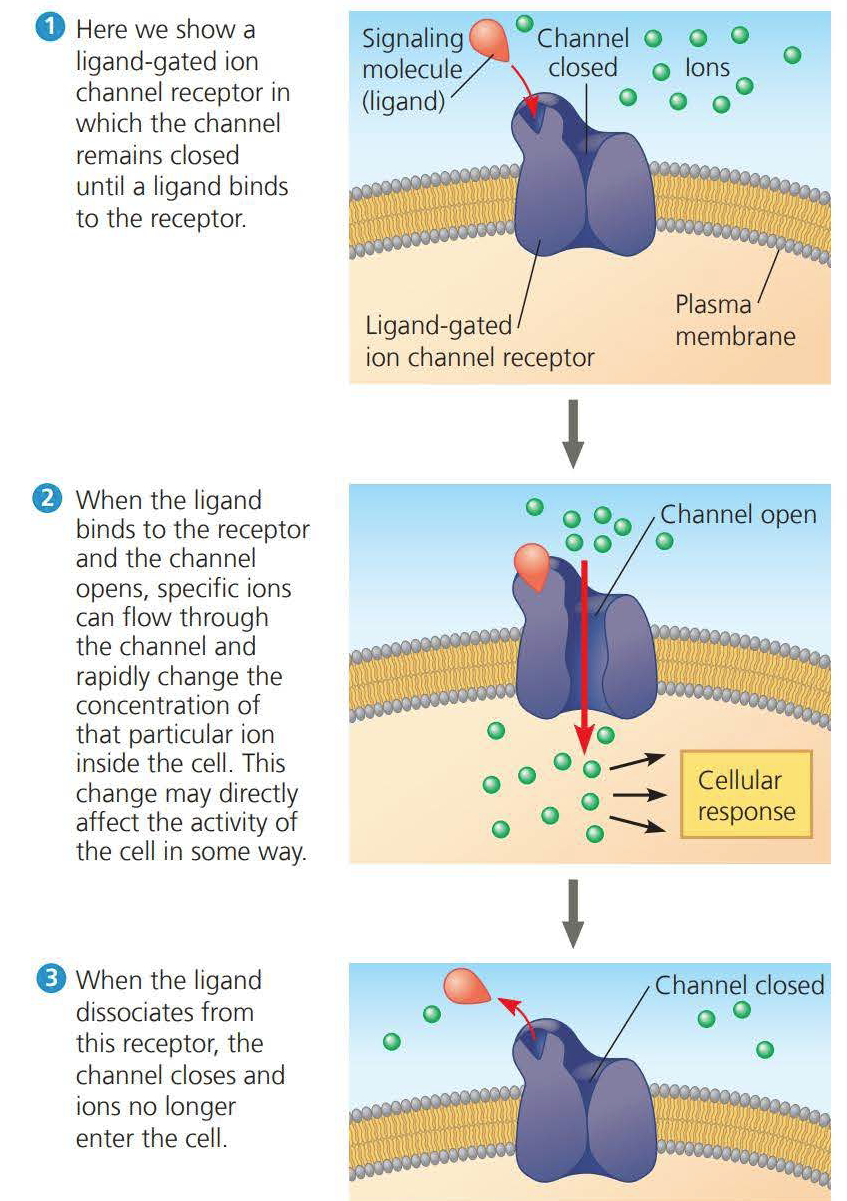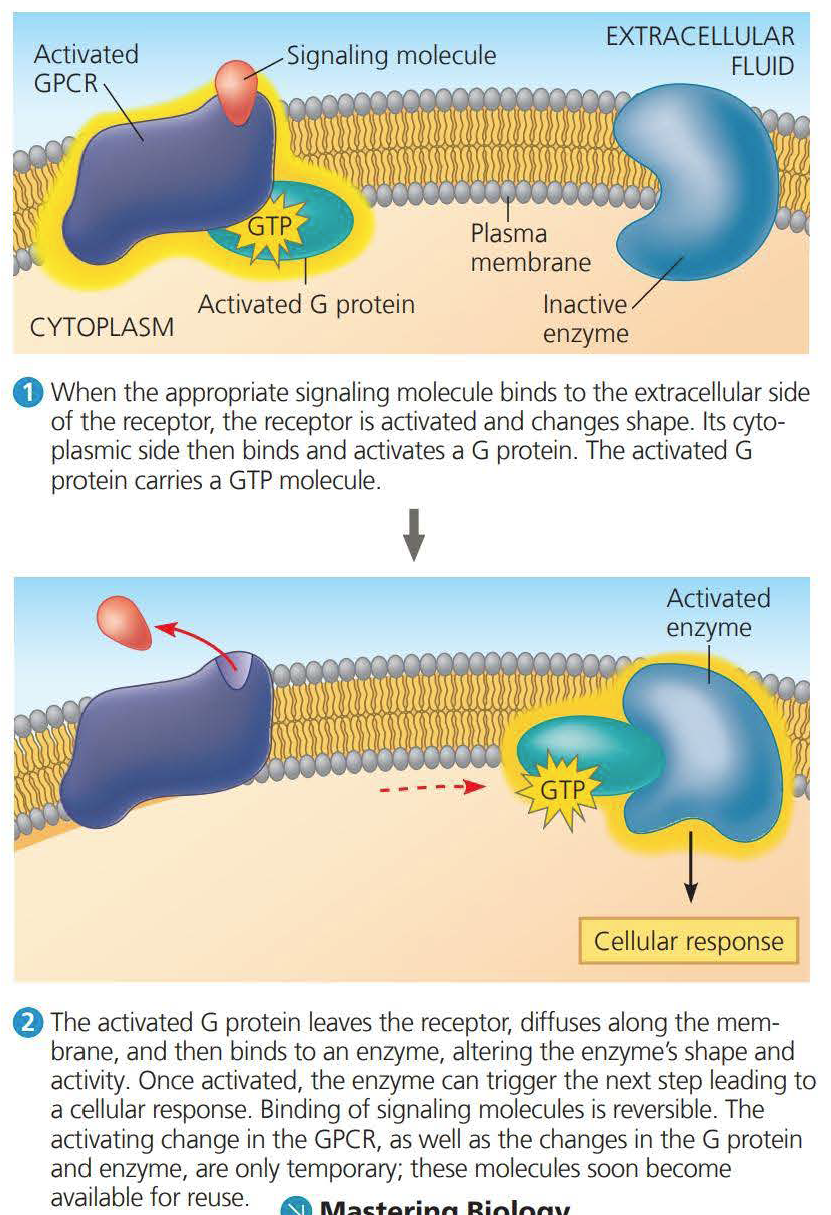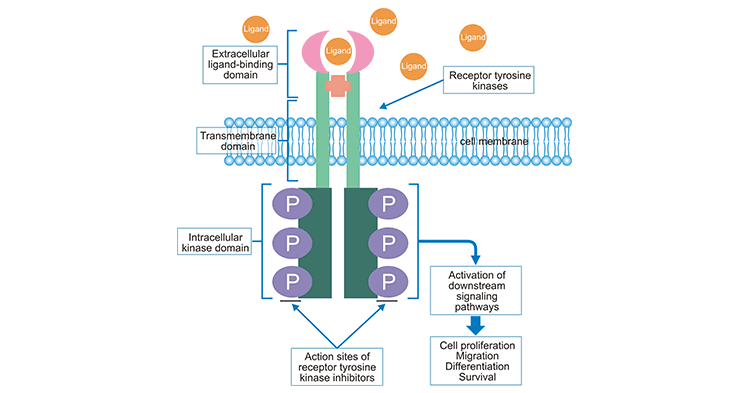Types of receptors

In part 1, we looked at two of the types of receptor proteins. Now we can further examine the types of membrane receptors:
- Gated ion receptors are transmembrane proteins (meaning that they span the entire plasma membrane). As implied by the name, they contain a gated channel. In ligand-gated ion receptors, the channel only opens when a ligand binds to the receptor and open the channel. The open channel allows only a specific ion to pass through. Voltage-gated ion channels only open their gates in response to a voltage difference across the membrane.
- G protein-coupled receptors are transmembrane proteins that activate G proteins by exchanging GTP for GDP on the G protein. The G-proteins then move to another enzyme and activate it. The activated enzyme triggers a cellular response. The enzyme is deactivated when GTP is replaced by GDP and the G-protein moves away from the activated enzyme. The activated enzyme sometimes releases a second messenger like cAMP (second messengers were explained in part 1).
- Protein kinase receptors are also transmembrane proteins. An important example of protein kinase receptors is receptor tyrosine kinase. Mitogen-activated proteins (MAPs) are kinase cascades that are activated by G proteins. Mitogens are mitosis generating substances that can trigger cell division. Ras, a G protein, is activated. Transcription factors regulate the expression of genes and basically decide whether the gene will be used to create proteins or not.
- Intracellular receptors are receptors in either the cytoplasm or nucleus of the cell. Only small, nonpolar molecules that can pass through the phospholipid bilayer bind to intracellular receptors. Usually, when the intracellular receptor is located in the nucleus, the receptor is called a nuclear receptor.



Disease and Cancer
Some diseases affect the signal transduction pathway and either modify it or make it nonfunctional.
Cholera is an example of this type of disease. Cholera is caused by waterborne bacteria. The bacteria prevents GTP from being converted back into GDP. The G protein regulates the concentration of Cl- ions in the cell. In its stuck active state, the G protein continuously transport chlorine ions out of the cell. By osmosis, water also leaves the cells and is excreted by the body in the form of diarrhea. The dehydration causes death.
Cancer is caused by uncontrolled cell division. Cells usually divide when they recognize growth factors. When cancer occurs, a cell with damaged DNA is not recognized as a malfunctioning cell and it divides instead of undergoing apoptosis (programmed cell death).
